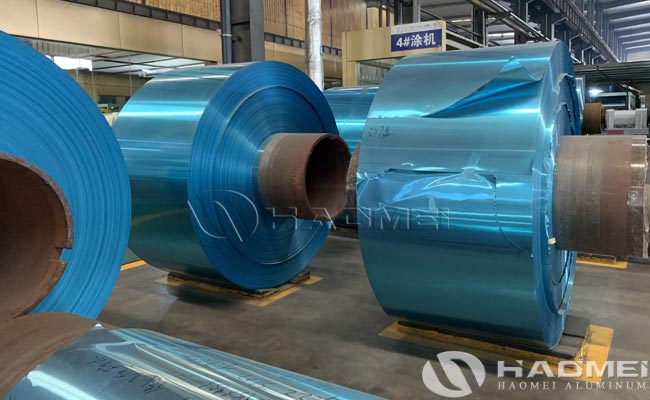Durable hydrophilic aluminum foil for HVAC systems is a functional material that achieves efficient heat transfer, corrosion resistance, and long-term stable operation through a special surface treatment. Its core advantages lie in its comprehensive improvements in hydrophilicity, corrosion resistance, heat exchange efficiency, and environmental performance. Hydrophilic aluminum foil is widely used in residential air conditioners, commercial central air conditioners, and industrial refrigeration equipment.

In HVAC systems, durable hydrophilic aluminum foil is commonly used to improve heat exchange efficiency and prevent condensation. A hydrophilic coating (such as hydroxylated acrylic resin or nano-silica) is applied to the foil surface through chemical or physical methods. This transforms condensed water from beads into a film-like structure, allowing it to disperse quickly, preventing accumulation and clogging of the channels between the fins. This increases the effective heat transfer area by approximately 5%, improving cooling/heating speeds. The addition of epoxy resin, nano-silica, and other ingredients to the coating creates a dense protective layer that significantly enhances salt spray, acid, and alkali resistance. Hydrophilic aluminum foil improves overall heat exchanger efficiency by 5%-15% by reducing air resistance (reducing noise) and increasing thermal conductivity. The coating does not contain harmful substances such as chromium and is compliant with RoHS and REACH regulations.
Key Performance Indicators of Hydrophilic Aluminum Foil For HVAC System:
- Coating Performance
– Thickness:
Single-sided coating thickness is typically 1.0-2.0 μm, accurately tested using the tetrahydrofuran dissolution method.
– Adhesion:
Cross-hatch test grade 0 (no coating peeling), cupping test grade no delamination.
– Hydrophilicity:
Initial contact angle ≤ 10°, sustained contact angle ≤ 15°, ensuring long-term condensation water diversion.
– Corrosion Resistance:
Salt spray test for at least 500 hours (grade ≥ 9.5), 2000 hours required in coastal areas.
- Mechanical and Processing Properties
– Tensile Strength:
When using 8011-H24 aluminum foil as the substrate, the tensile strength is 115-145 MPa, and the elongation is ≥ 15%, meeting stamping requirements.
– Mold Compatibility:
The coating exhibits comparable mold wear to ordinary aluminum foil, ensuring stable production.
Applications of Hydrophilic Aluminum Foil For HVAC System:
– Condensers and Evaporators:
Using hydrophilic aluminum foil in condensers and evaporators can improve heat exchange performance and reduce energy consumption.
– Air Handling Units:
In the heat exchangers of air handling units, hydrophilic aluminum foil effectively controls humidity and improves air quality.
– Duct Systems:
Used for insulation and moisture protection in air ducts, reducing condensation and preventing mold growth.
– Residential and Commercial Air Conditioning Systems:
Widely used in residential and commercial air conditioning systems to improve comfort and energy efficiency.
Through material innovation and process optimization, durable hydrophilic aluminum foil has become a key material for the efficient and stable operation of HVAC systems. Its core value lies in its long-term corrosion resistance, self-cleaning capabilities, and improved heat exchange efficiency, while also balancing environmental and cost-effectiveness.
